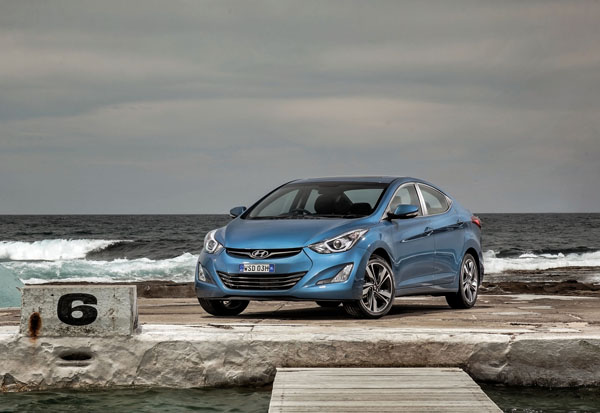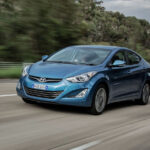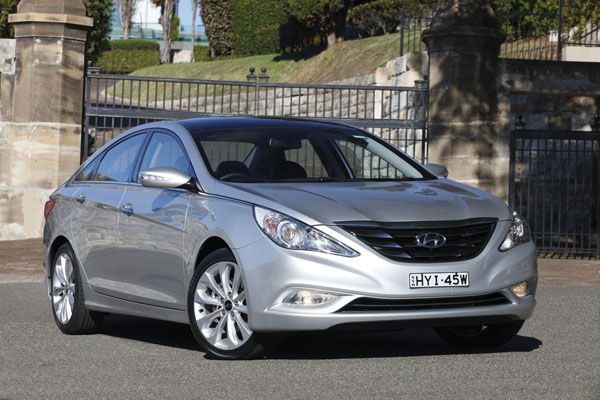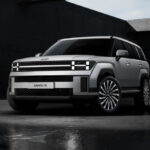If the sales numbers of the Hyundai i30 hatchback and Hyundai Elantra sedan were combined there were periods when this would have been the best selling car in Australia during 2013. Why has Hyundai chosen to market the hatch and sedan versions of the same car under two different names? The answer is buried somewhere inside the mysteries of marketing…
Different names aside, this certainly shows just how far the South Korean manufacturer has moved forward since taking control of Hyundai imports in this country just on ten years ago.
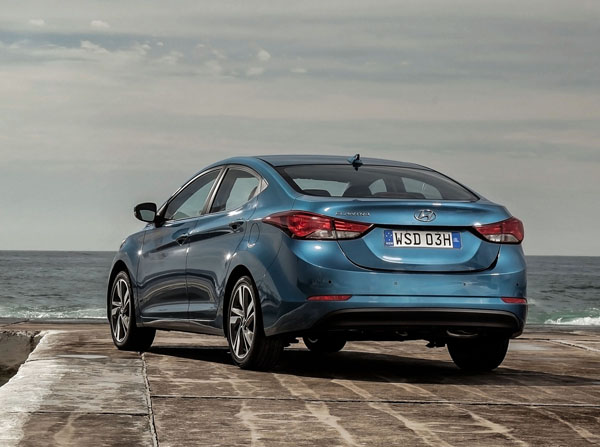
STYLING
The original shape was impressive, now it’s received a mild facelift with new bumper front and rear. There’s now a chromed grille (with darker chrome on the Premium than the other models) and chromed beltline moulding, foglights on all three models has given it an even bolder look.
New-design 16-inch alloy wheels are used on the mid-spec Elantra Elite, with 17-inch alloys, again to a new style, on the topline Premium.
Elantra Series II Elite and Premium have power folding door mirrors. The Premium now has projection-beam headlights with surrounding LED daytime running lights.

On the downside, the use of the sleek domed roof can cause headroom problems for tall occupants in the back. My 1.83-metre frame has my head mighty close to the roof. Similarly, there’s not a lot of spare space above the driving seat in Elantra’s with a sunroof.
Other than in headroom, though, the new Hyundai Elantra has generous interior dimensions, in many of which it comes close to interior volume in cars from the next size class up.
As a bonus, the sleek shape results in a coefficient of drag of just 0.28, a very low figure for this class. It’s not all for show, slipping cleanly through the air reduces fuel consumption, as well as wind noise inside the cabin.
Inside, the styling of the Elantra is as futuristic as that of the exterior, with interesting shapes to the centre console and instrument binnacle.
ENGINES / TRANSMISSIONS
Power comes from a slightly revised version of the new generation four-cylinder 1.8-litre engine introduced in June 2011. It produces up to 110 kilowatts of power and 178 Nm of torque.
It’s mated to either a six-speed manual or six-speed automatic, with the latter having electronic sequential manual mode.
SAFETY
Hyundai Elantra Series II continues the five-star ANCAP safety rating and achieved by its predecessor. Elite and Premium now have the image from the rear-view camera displayed in the conventional manner on the central screen. It used to be shown as a tiny picture on the rear view mirror.
Standard safety features include: six airbags, ABS brakes with EBD, Electronic Stability Control, Traction Control System (TCS), and a sophisticated Vehicle Stability Management (VSM) system.
DRIVING
When we tested the first models in this new generation Hyundai Elantra we found the suspension was nicely sporting, but verging on being too firm at times. That has now been rectified and we were impressed not only with the increased comfort, but even more so with the fact the Elantra continues to handle well. It still has the sharp turn in, positive steering that’s happy to change direction mid corner, and good feedback that we previously admired.
Elantra Series II has Hyundai’s Clever Flex Steer electric-assisted system that lets the driver choose between different levels of feel through the steering wheel.
Much of the suspension work, both in its original format and in the revised layout was done in Australia by a team comprising local, British and South Korean engineers.
One problem that hasn’t been fixed is the lack of visibility caused by Elantra’s bulky windscreen pillars. This is aggravated by the steep slope of the windscreen. Unless you move your head about while driving there are going to be occasions when you simply don’t see other road users.
We love the way the Hyundai engine sings along at high revs in a manner reminiscent of Italian car engines, but is happy to pull from low rpm.
SUMMING UP
Hyundai Elantra Series II continues its predecessor’s good combination of low price, sleek looks and excellent engines, so should sell well.
If the marketing guys can be persuaded to rename the Elantra as the Hyundai i30 sedan the total sales of the two bodies could well give Toyota Corolla and Mazda3 a run for their money at the top end of the sales race in Australia.




